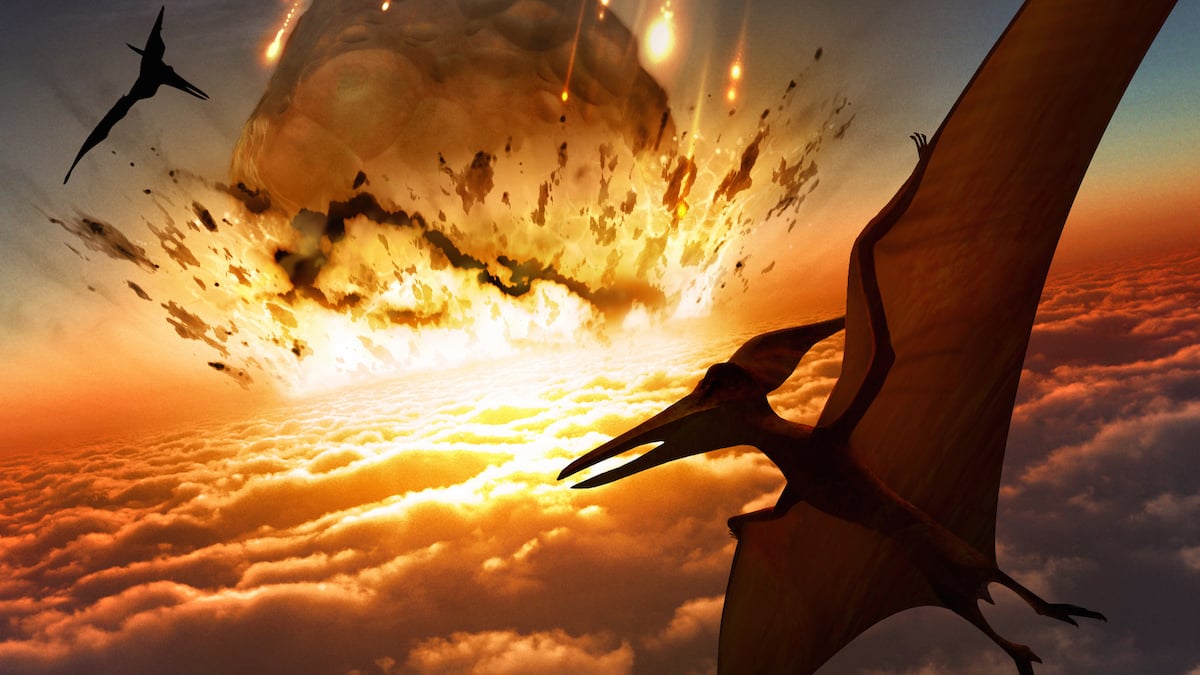
A menacing asteroid, some six miles wide, triggered Earth’s last mass extinction. Now, scientists have found where it originated.
Unlike most space rocks that impact our planet today, this behemoth object came from beyond the gas giant Jupiter. It was a “C-type asteroid” — which are the dark, carbon-rich leftovers of the outer solar system — and the impact scattered the fateful object’s remains all over Earth, some 66 million years ago.
It was “a projectile originating at the outskirts of the solar system and sealing the fate of the dinosaurs,” Mario Fischer-Gödde, who researches the origin of asteroids and planets at the University of Cologne in Germany, told Mashable.
NASA scientist viewed first Voyager images. What he saw gave him chills.
Fischer-Gödde led the new research, which was published in the peer-reviewed journal Science.
The asteroid left quite a mark. Today this impact zone is called the Chicxulub Crater, and is largely buried beneath the Yucatan Peninsula. The massive object struck in shallow water, blowing prodigious amounts of pulverized rock into the skies which drastically cooled the climate. A long, callous winter followed. Photosynthesis shut down. The food chain failed, and around 70 percent of Earth’s species died. Though some dinosaurs survived.
Mashable Light Speed
A thin layer of sediment from this event, called the K-Pg boundary, is found around our planet. And one of the elements in it, ruthenium, is quite rare in Earth’s crust, meaning that nearly 100 percent of the ruthenium in this widespread sediment sheet is from the infamous asteroid. Importantly, the researchers found the ruthenium isotopes (which are different types of ruthenium) in this telltale layer are similar to carbon-rich meteorites found all over Earth. What’s more, the ruthenium samples didn’t match the remnants of other major asteroid impacts, which came from objects formed in the inner solar system.
“We found that the composition of the asteroid that impacted at Chicxulub is the same as that of carbonaceous meteorites, which are fragments of carbonaceous (C-type) asteroids that originally formed beyond the orbit of Jupiter,” Fischer-Gödde said.
Previous research suspected the culprit was a C-type asteroid, too, but didn’t use ruthenium in the analyses. That’s because making these ruthenium measurements is very difficult, and progressive technological advancements made the latest observations possible, Fischer-Gödde explained. Only three or so laboratories globally, including at the University of Cologne, can conduct this ultra-specialized research.
The C-type asteroid Mathilde as captured by the NEAR spacecraft on June 27, 1997. It’s some 38 miles (61 kilometers) across.
Credit: NASA / JPL / JHUAPL

A depiction of an asteroid collision that likely lead to a mountain-sized rock heading towards Earth 66 million years ago.
Credit: NASA / JPL-Caltech
As the solar system formed, many C-type asteroids came to inhabit the outskirts of the main asteroid belt, a ring containing millions of rocky objects between Mars and Jupiter. It’s here the six-mile-wide Chicxulub impactor was probably propelled towards Earth. This was likely triggered by a collision between two asteroids, Fischer-Gödde explained. Or exposure to sunlight, causing a region on the space rock to heat up and release energy, could have given the asteroid a nudge (an outcome called the “Yarkovsky effect”).
Such a huge collision with Earth, however, is extremely rare. A “dinosaur-killing” impact from a rock perhaps a half-mile across or larger happens on 100-million-year timescales. Astronomers have already found over 90 percent of the “planet-killer” asteroids that at times pass near Earth’s neighborhood. There’s no known threat of collision from these giant rocks for the next century; and the likelihood of an impact in the next thousand years is exceedingly low. (Meanwhile, impacts by objects around 460 feet in diameter occur every 10,000 to 20,000 years — an event that would be regionally devastating.)
Fortunately, should astronomers ever spot a large asteroid that threatens our humble world, NASA has successfully tested the first-ever endeavor to intentionally move an asteroid. It’s a skill that needs significantly more refining, of course, but could prove useful in defending our civilization from future devastation.
NASA has never even needed to issue a warning about an incoming space rock, large or small. But if such an event ever transpires, you’ll hear from the White House and many others — not just excitable tabloids.